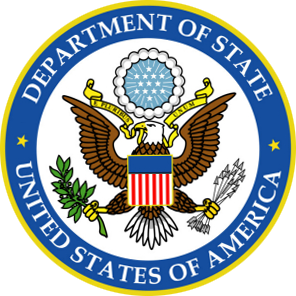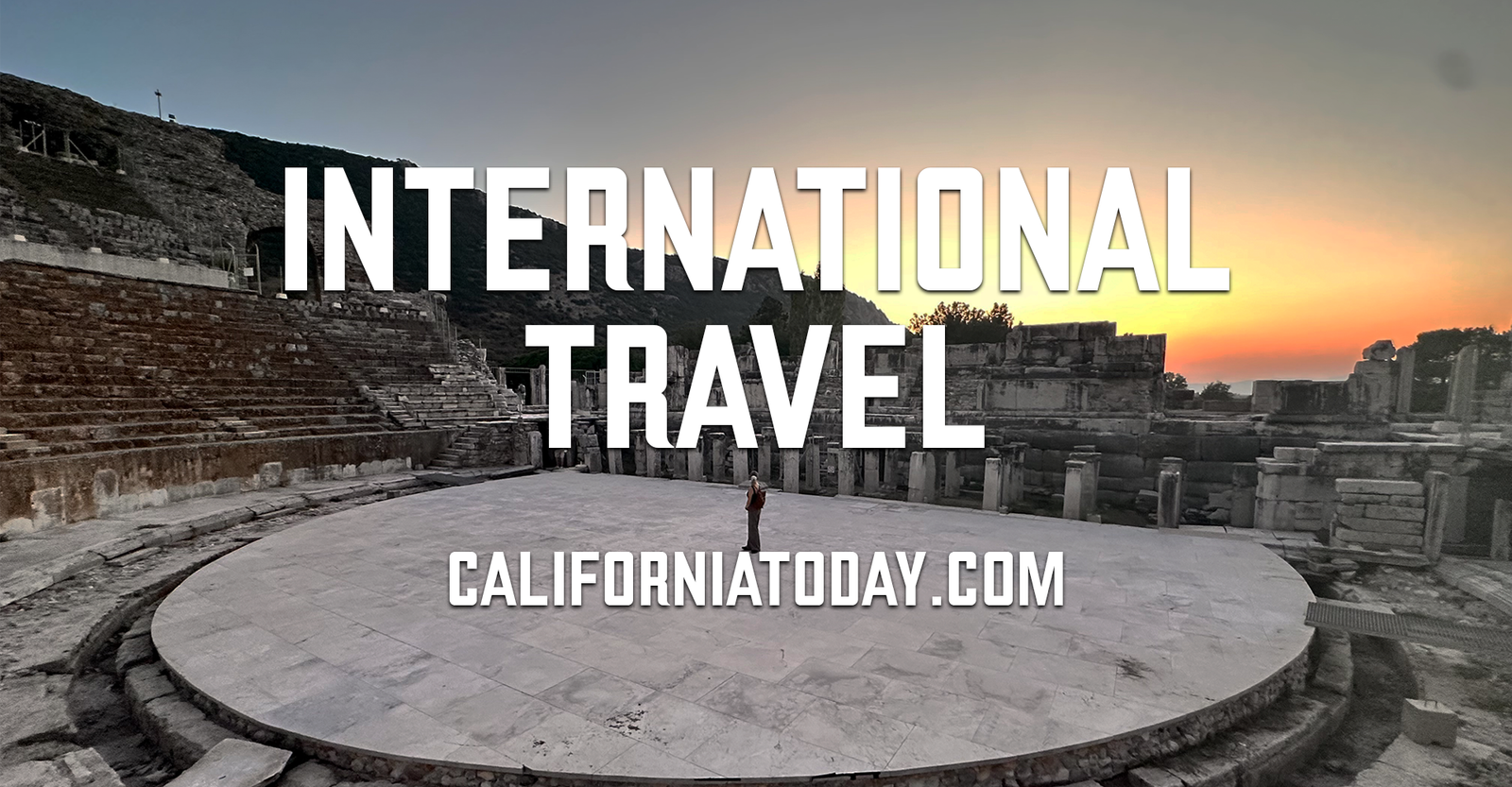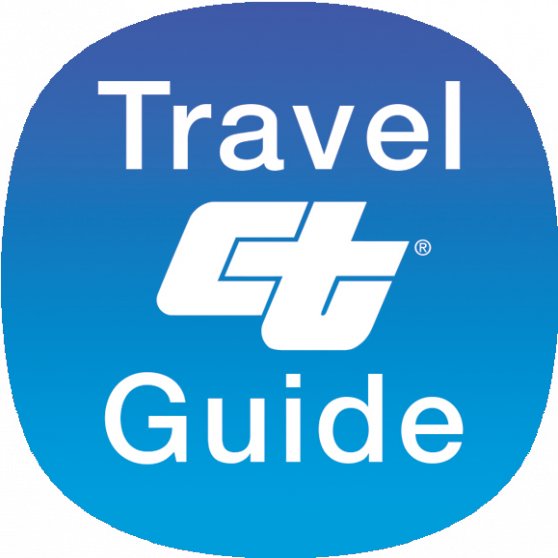Traveling internationally from California? Whether you’re planning a vacation, studying abroad, or heading overseas for work, our comprehensive guides and expert tips make the process smoother. From visa requirements to budget-friendly travel hacks, we’ve got everything you need to explore the world with confidence.

Browse Our International Travel Guides
Discover destination-specific guides to help you plan your trip efficiently:

Top Destinations
Explore must-visit international locations for Californians:

Visa & Entry Requirements
Understand travel documentation and visa rules:

Budget Travel Tips
Learn how to save money while exploring the world:

Best Flight Deals & Routes
Find the most convenient and affordable flights:

Packing & Travel Essentials
What to bring and what to leave behind:

Essential Tips for International Travelers
Make your journey seamless with expert advice:
Currency & Payments: Managing Money While Traveling Abroad
When traveling internationally from California, managing your money efficiently can help you avoid unnecessary fees, scams, and financial headaches. From currency exchange tips to mobile payment options, here’s everything you need to know to handle your finances smoothly while exploring the world.
Understanding Exchange Rates and Currency Conversion
Before you depart, it’s essential to understand how exchange rates work. The value of the U.S. dollar (USD) fluctuates against other currencies daily, and the rate you get can impact how much you pay abroad.
- Check real-time exchange rates using reliable sources like XE Currency Converter or Wise.
- Avoid exchanging money at airports, where rates are often inflated. Instead, use local banks or currency exchange services in the destination country.
- Consider withdrawing local currency from ATMs, which often offer better rates than exchange kiosks.
Best Ways to Pay Internationally
Depending on your destination, you’ll have multiple options for making payments abroad.
Credit and Debit Cards
- Most major credit cards, including Visa, Mastercard, and American Express, are widely accepted in major cities worldwide.
- Look for travel-friendly credit cards with no foreign transaction fees, such as the Chase Sapphire Preferred or the Capital One Venture Rewards card.
- Enable contactless payments before traveling, as many countries prefer tap-to-pay transactions over cash.
Mobile Payment Apps & Digital Wallets
- Mobile payment platforms like Apple Pay, Google Pay, and Samsung Wallet are increasingly accepted at international retailers.
- In some regions, local payment apps dominate—such as WeChat Pay and Alipay in China or Paytm in India. Make sure to check what’s commonly used in your destination.
Cash vs. Card: When to Use Each
- While card payments are common in many developed countries, some regions still rely heavily on cash.
- Markets, small restaurants, and rural areas may not accept cards, so always carry a small amount of local currency.
- Use ATM locators from major networks like Visa Plus or Mastercard Cirrus to find ATMs abroad.
Avoiding Foreign Transaction Fees & ATM Charges
Bank fees can quickly add up when making purchases or withdrawing cash abroad. Here’s how to minimize them:
- Choose a debit card that reimburses international ATM fees, such as the Charles Schwab High Yield Investor Checking account.
- Use a multi-currency digital wallet, like Revolut or Wise (formerly TransferWise), to get better exchange rates and lower fees on transactions.
- Notify your bank of your travel plans to prevent your card from being flagged for fraud.
Tips for Staying Secure While Managing Money Abroad
- Avoid using public Wi-Fi for online banking—use a VPN like NordVPN for security.
- Keep a backup card in case of theft or loss, and store it separately from your primary card.
- Be cautious of ATM skimmers—use ATMs located inside banks rather than on the street.
By planning ahead and choosing the right payment methods, you can spend less time worrying about money and more time enjoying your international adventure.
Health & Safety: Travel Insurance, Vaccinations, and Staying Safe Overseas
Staying healthy and safe while traveling internationally from California requires preparation. From choosing the right travel insurance to understanding vaccination requirements and emergency protocols, here’s everything you need to know to protect yourself while exploring the world.
Travel Insurance: Do You Really Need It?
Travel insurance is one of the most important investments for any international trip. It can cover medical emergencies, trip cancellations, lost luggage, and more. Here’s why it’s essential:
- Medical emergencies abroad can be costly. Many U.S. health insurance plans, including Medicare, do not provide coverage outside the country. Travel insurance can help cover hospital bills, doctor visits, and even medical evacuation.
- Trip cancellations and interruptions happen. Whether due to illness, extreme weather, or unforeseen circumstances, insurance can reimburse you for non-refundable expenses.
- Lost or stolen belongings are common. Insurance can help you recover costs for stolen passports, baggage, or electronics.
How to Choose the Best Travel Insurance
Look for a policy that covers:
- Medical emergencies & evacuation – Make sure it includes at least $100,000 in medical coverage and emergency evacuation.
- Trip cancellations & interruptions – Covers prepaid flights, hotels, and tours.
- Lost baggage & theft – Protection for lost luggage and stolen valuables.
- Adventure sports coverage – Essential if you plan on skiing, scuba diving, or other high-risk activities.
Best travel insurance providers:
- World Nomads – Great for adventure travelers.
- Allianz Travel Insurance – Comprehensive coverage for all types of travelers.
- SafetyWing – Affordable long-term travel insurance for digital nomads.
Many destinations require specific vaccinations before entry. Check the latest recommendations at the CDC’s Traveler’s Health page to see what’s required for your destination.
Common Vaccines for International Travel
- Routine vaccines – Ensure your MMR (measles, mumps, rubella), tetanus, and flu shots are up to date.
- Hepatitis A & B – Recommended for most travelers, especially if consuming street food or visiting rural areas.
- Typhoid – Essential for destinations where food and water sanitation may be an issue.
- Yellow Fever – Required for entry into certain countries, especially in South America and Africa.
- Rabies – Recommended for those spending time outdoors, especially in regions with stray animals.
- Malaria prevention – Some countries require anti-malarial medication rather than a vaccine. Check with the WHO malaria map for risk areas.
Where to get travel vaccines in California:
- Passport Health – Nationwide travel health clinics with locations in California.
- CVS MinuteClinic – Some locations offer travel vaccines and consultations.
- Your primary care physician – Check with your doctor at least 4-6 weeks before departure.
Staying Safe While Traveling Abroad
Safety concerns vary by destination, but following general precautions can help you avoid common risks.
Avoiding Scams & Theft
- Use a money belt or RFID-blocking wallet to protect against pickpockets and electronic theft.
- Be cautious of ATM scams—use machines inside banks, and cover your PIN when entering it.
- Avoid too-good-to-be-true deals from strangers, such as cheap taxis or free tours.
- Check local scam warnings on Scamwatch or through travel forums like TripAdvisor.
Staying Safe in Hotels & Airbnb Rentals
- Choose secure accommodations with good reviews on platforms like Booking.com and Airbnb.
- Use hotel safes for valuables and keep your passport in a secure location.
- Lock doors and windows, even when inside your room.
Emergency Numbers & U.S. Embassy Assistance
Know the local emergency numbers in your destination (911 does not work everywhere!). Check this list of international emergency numbers.
Need help abroad?
- Locate the nearest U.S. Embassy or Consulate through the U.S. Department of State.
- Enroll in the STEP Program (Smart Traveler Enrollment Program) to receive travel alerts and safety updates from the U.S. government.
By taking these precautions and preparing ahead of time, you’ll reduce travel risks and ensure a smoother, healthier trip.
Cultural Etiquette & Local Customs: How to Respect and Enjoy Different Cultures
Traveling internationally from California opens the door to new experiences, traditions, and customs. While exploring different countries, being aware of cultural etiquette ensures you make a great impression, avoid misunderstandings, and fully enjoy your journey. Here’s what you need to know to navigate social norms with confidence and respect.
Why Cultural Awareness Matters
Understanding local customs isn't just about avoiding embarrassment—it’s about showing respect to the people and places you visit.
- In some cultures, a simple gesture like a handshake might be expected, while in others, it could be seen as intrusive.
- Tipping customs vary worldwide—what’s generous in the U.S. might be offensive elsewhere.
- Even something as simple as how you dress can impact how locals perceive you.
By learning about local traditions before you go, you’ll have more meaningful interactions and a richer travel experience.
Greetings and Personal Space: What’s Acceptable?
Different cultures have unique ways of greeting and interacting with others.
Handshakes, Bows, and Kisses
🤝 Handshakes are common in the U.S. and much of Europe but may not be the norm everywhere.
- In Japan, people bow instead of shaking hands.
- In France, a kiss on both cheeks is a common greeting.
- In Thailand, the “wai” gesture (palms together with a slight bow) is preferred over handshakes.
✋ Personal space also varies by country.
- In Latin America, the Middle East, and Mediterranean countries, people tend to stand closer during conversations.
- In Scandinavian and East Asian cultures, personal space is more respected, and physical touch is less common.
Before you reach out for a handshake or a hug, observe how locals interact with each other.
🔗 More on cultural body language
Dining Etiquette: What’s Polite at the Table?
Mealtime customs differ widely around the world, from how to use utensils to whether it’s polite to finish all your food.
🍽️ Fork, Chopsticks, or Hands?
- In China and Japan, never leave chopsticks sticking upright in a bowl—it resembles funeral rituals.
- In India and the Middle East, eating with your right hand (instead of utensils) is common, but using your left hand is considered impolite.
- In Europe, keeping both hands on the table while dining is expected in some countries, while in the U.S., resting your free hand in your lap is more common.
💡 Tipping Rules
- U.S. & Canada: 15-20% is standard.
- Japan & South Korea: Tipping can be seen as rude, as good service is expected without extra compensation.
- Europe: Service charges are often included, but leaving small change is appreciated.
- Middle East: Tipping is customary, but amounts vary by country.
🔗 Check tipping etiquette by country
Dress Codes: What’s Appropriate?
Wearing the right clothing can prevent cultural misunderstandings and show respect for local customs.
👗 Modesty Matters
- In Middle Eastern countries, women are often required to cover their shoulders, arms, and legs, and in some cases, wear a headscarf.
- In Buddhist temples in Thailand and Cambodia, both men and women should wear clothing that covers their knees and shoulders.
- In European churches, dressing modestly is expected when entering places of worship.
👟 Shoes On or Off?
- In Japan, Korea, and some parts of Southeast Asia, removing your shoes before entering homes, temples, and certain restaurants is mandatory.
- In Western countries, wearing shoes indoors is generally acceptable, but always follow the host’s lead.
🔗 Guide to international dress codes
Religious & Cultural Sensitivities
Respecting religious customs is crucial when traveling to diverse regions.
⛪ Sacred Sites & Places of Worship
- Always dress appropriately when visiting churches, mosques, temples, or synagogues.
- In many Muslim countries, non-Muslims cannot enter mosques, but exceptions exist (such as the Blue Mosque in Turkey).
- In Hindu temples in India, leather items (like belts or wallets) may not be allowed inside.
📸 Photography Rules
- In some religious sites, photography is strictly prohibited—always check before taking pictures.
- Avoid taking photos of people without their permission, especially in rural communities.
🔗 Learn about global religious customs
Common Cultural Faux Pas to Avoid
🚫 Avoid These Travel Mistakes
- ❌ Pointing at people with your finger in Thailand—it’s considered rude.
- ❌ Giving a thumbs-up in the Middle East—it’s equivalent to an offensive gesture.
- ❌ Touching someone’s head in Buddhist cultures—it’s a sacred part of the body.
- ❌ Refusing food in some countries (like Italy or Greece)—it may be seen as impolite.
- ❌ Speaking too loudly—Americans tend to be louder than people in some other cultures, especially in Japan and parts of Europe.
How to Be a Respectful Traveler
- ✅ Learn a few key phrases – Even basic greetings in the local language can go a long way. Use Google Translate or Duolingo to help.
- ✅ Observe before acting – Watch how locals behave and follow their lead.
- ✅ Ask if unsure – If you don’t know what’s appropriate, politely ask someone.
- ✅ Be open-minded – Embrace new customs, even if they seem unusual at first.
Respecting cultural etiquette isn’t just about following rules—it’s about showing appreciation for the places you visit. By making an effort to understand and respect local traditions, you’ll have more meaningful interactions and a more enriching travel experience. 🌍✈️
Tech & Connectivity: Staying Connected While Traveling Abroad
Staying connected while traveling internationally from California is essential for navigating unfamiliar places, keeping in touch with loved ones, and accessing important travel information. Whether you need reliable mobile data, Wi-Fi, or offline alternatives, here’s how to stay online efficiently without excessive roaming charges.
Best Ways to Stay Connected Abroad
Before you travel, consider how you’ll access the internet and use your phone for calls, texts, and navigation. The main options include:
- ✅ International SIM cards – A great option for travelers who want local data at affordable rates. – Offers eSIMs for 200+ countries with instant activation.
- ✅ eSIMs – A digital SIM that works without swapping physical cards, making activation seamless.
- ✅ International roaming – Convenient but often expensive unless your carrier has a cost-effective plan.
- ✅ Pocket Wi-Fi & public hotspots – Useful for group travel or destinations with limited cellular coverage.
International SIM Cards: Affordable Local Data Plans
One of the best ways to save money while traveling is by using a local or international SIM card. These prepaid cards replace your U.S. SIM and give you access to cheaper mobile data and calls abroad.
Top International SIM Card Providers:
- Airalo – Offers eSIMs for 200+ countries with instant activation.
- OneSimCard – A physical global SIM with coverage in over 190 countries.
- KnowRoaming – Pay-as-you-go and unlimited daily data plans.
How to Get a Local SIM Card
- Purchase a SIM at the airport upon arrival, at major convenience stores, or in official mobile carrier shops.
- Ensure your phone is unlocked—locked phones from U.S. carriers may not accept foreign SIMs.
- Research the best carrier in your destination (e.g., Vodafone in Europe, Telcel in Mexico, or AIS in Thailand).
eSIMs: A Seamless Digital Alternative
eSIMs are becoming a preferred option for travelers because they eliminate the need for swapping physical SIM cards. If your phone supports eSIM technology, you can purchase and activate an international plan online before you even leave California.
Best eSIM Providers for Travelers:
- Nomad – Flexible regional and global eSIM plans.
- GigSky – Pay-as-you-go international data plans.
- Ubigi – eSIMs with 5G support in select countries.
💡 How to Activate an eSIM:
- Purchase an eSIM plan from a provider’s website.
- Scan the provided QR code to activate the eSIM on your phone.
- Choose the eSIM as your primary data plan while abroad.
🔗 List of eSIM-compatible phones
International Roaming: Is It Worth It?
Many U.S. mobile carriers offer international roaming plans, but they can be expensive if not managed properly. If you prefer to keep your current phone number and avoid switching SIMs, check your carrier’s international options.
International Plans by U.S. Carriers:
- T-Mobile Magenta Plan – Includes free 2G data and texting in over 210 countries, with paid upgrades for high-speed data.
- AT&T International Day Pass – $10 per day for calls, texts, and data from your existing plan.
- Verizon TravelPass – $10/day for North America and $5/day for other regions.
Tips for Avoiding Excessive Roaming Fees:
- Turn off mobile data roaming in settings if you’re not using an international plan.
- Use Wi-Fi calling instead of cellular calls whenever possible.
- Download offline maps (Google Maps, Citymapper) to navigate without data.
🔗 Guide to international roaming
Pocket Wi-Fi & Public Hotspots: Reliable Internet on the Go
For travelers who need high-speed internet but don’t want to use SIM cards, portable Wi-Fi devices and public hotspots can be useful.
📶 Best Pocket Wi-Fi Devices:
- Skyroam Solis – Unlimited 4G Wi-Fi in over 130 countries.
- TravelWifi – Rental Wi-Fi with flexible plans.
- GlocalMe – A SIM-free mobile hotspot with global coverage.
💡 How to Use Public Wi-Fi Safely:
- Use a VPN (NordVPN or ExpressVPN) to protect your data.
- Avoid logging into banking apps or entering sensitive information on public networks.
- Look for official hotspots at hotels, cafes, and libraries instead of unsecured networks.
Offline Travel Apps: Staying Connected Without Wi-Fi
Even if you don’t have a constant internet connection, these apps can help you stay informed:
- 📍 Google Maps Offline – Download maps before you travel for offline use.
- 🗣️ Google Translate – Save language packs to translate without Wi-Fi.
- 📅 TripIt – Organizes your travel itinerary with offline access.
- 📚 Kindle App – Save guidebooks and reading materials to use on the go.
🔗 How to download offline Google Maps
Final Tips for Staying Connected Internationally
- ✅ Check if your phone is unlocked before purchasing an international SIM.
- ✅ Compare data plans between SIMs, eSIMs, and roaming to find the most affordable option.
- ✅ Use a VPN for security when connecting to public Wi-Fi.
- ✅ Download essential apps for offline access to maps, translation, and travel guides.
With the right connectivity plan, you can stay online, share your travels, and access important information seamlessly, no matter where your journey takes you.
Jet Lag & Travel Hacks: Beating Fatigue and Making Long-Haul Flights Easier
Jet lag can disrupt your sleep schedule, drain your energy, and make it harder to enjoy your trip. Whether you’re flying from California to Europe, Asia, or beyond, these strategies will help you minimize jet lag, stay comfortable on long-haul flights, and adjust quickly to new time zones.
Understanding Jet Lag: Why It Happens
Jet lag occurs when your internal body clock (circadian rhythm) is out of sync with the new time zone. The more time zones you cross, the worse the symptoms can be, including:
- Fatigue and daytime sleepiness
- Difficulty sleeping at night
- Headaches and irritability
- Digestive issues
Rule of Thumb: It takes about one day per time zone crossed for your body to fully adjust. However, with the right strategies, you can speed up the process.
Before Your Flight: Prepare Your Body for the Time Change
- Gradually adjust your sleep schedule – Start shifting your bedtime 30-60 minutes earlier or later (depending on your destination) a few days before departure. Apps like Timeshifter can create a personalized jet lag plan.
- Stay hydrated – Dehydration makes jet lag worse. Drink plenty of water before and during the flight, and avoid alcohol and caffeine.
- Take the right flight – When possible, book overnight flights so you can sleep on the plane and wake up in your destination’s morning.
- Use light exposure wisely – Light exposure plays a big role in resetting your body clock. If flying east (e.g., California to Europe), expose yourself to bright light in the morning. If flying west (e.g., California to Asia), get light in the evening.
- Adjust your meal times – Start eating meals in sync with your destination’s time zone a day or two before departure.
During the Flight: Staying Comfortable and Managing Sleep
- Dress comfortably – Wear loose-fitting clothes and bring warm layers. Compression socks can help prevent swelling.
- Use noise-canceling headphones & eye masks – Block out distractions and create a dark, quiet space for sleeping. The Bose QuietComfort Earbuds and Manta Sleep Mask are top-rated options.
- Follow your destination’s time zone – Set your watch and phone to your destination’s time as soon as you board the plane.
- Avoid heavy meals – Stick to light, protein-rich meals and avoid salty foods that can lead to dehydration and bloating.
- Stay active – Get up and walk around every 1-2 hours to improve circulation and prevent deep vein thrombosis (DVT). Simple in-seat stretches like ankle circles and shoulder rolls help reduce stiffness.
After Landing: Reset Your Body Clock Quickly
- Get sunlight as soon as possible – Natural sunlight helps your body adjust faster to the new time zone. Spend at least 30-60 minutes outside after arrival.
- Avoid napping – Try to stay awake until at least 9-10 PM local time to help your body adapt.
- Use melatonin if needed – A small dose of 0.5-3 mg of melatonin can help you fall asleep at night in your new time zone.
- Eat at local meal times – Even if you’re not hungry, eating meals at the correct times helps your body adjust.
- Stay hydrated – Drink plenty of water to flush out fatigue and help with recovery.
- Exercise and move – Light exercise like a walk or yoga can help fight off sluggishness.
How sunlight affects jet lag recovery
Best Travel Gadgets & Apps to Beat Jet LagApps to Help Adjust to New Time Zones
- Timeshifter – Personalized jet lag plan based on your flight details.
- Entrain – Helps adjust your body clock using light exposure.
- Calm or Headspace – Guided meditation and sleep sounds for relaxation.
- F.lux – Adjusts your screen brightness to reduce blue light before bedtime.
Top Gadgets for a Comfortable Flight
- Trtl Travel Pillow – Supports your neck for better in-flight sleep.
- Bose QuietComfort Earbuds – Blocks airplane noise for uninterrupted rest.
- Hydration Tablets (Nuun or Liquid I.V.) – Prevent dehydration and fatigue.
Final Jet Lag Tips for Long-Haul Travelers
- Adjust your schedule before departure.
- Drink lots of water and avoid alcohol.
- Move around frequently during the flight.
- Get as much natural sunlight as possible upon arrival.
- Use melatonin only if struggling to sleep.
- Be patient—your body will adjust in a few days!
With these travel hacks, you can beat jet lag, feel refreshed, and make the most of your international trip from California. Safe travels!
Stay informed and prepared for your next global adventure—explore our guides and start planning today.









